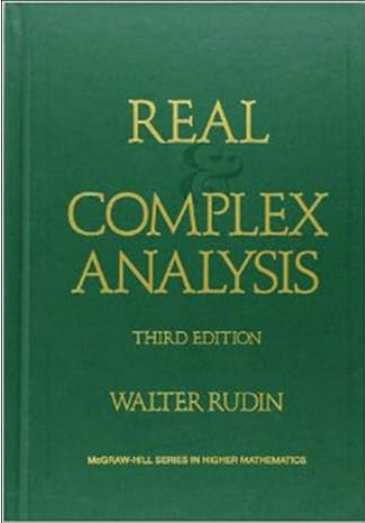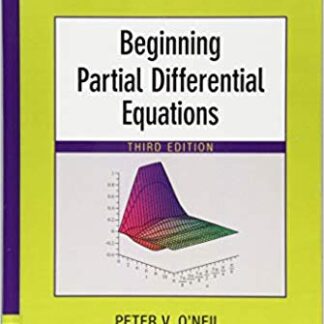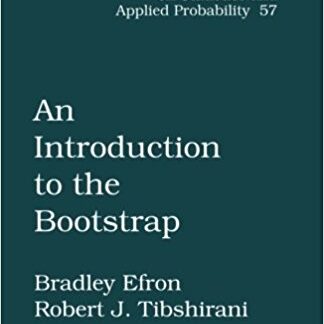Description
Real and Complex Analysis Higher Mathematics Series 3rd Edition by Walter Rudin, ISBN-13: 978-0070542341
[PDF eBook eTextbook]
- Publisher: McGraw Hill; 3rd edition (May 1, 1986)
- Language: English
- ISBN-10: 0070542341
- ISBN-13: 978-0070542341
This text is part of the Walter Rudin Student Series in Advanced Mathematics.
This is an advanced text for the one- or two-semester course in analysis taught primarily to math, science, computer science, and electrical engineering majors at the junior, senior or graduate level. The basic techniques and theorems of analysis are presented in such a way that the intimate connections between its various branches are strongly emphasized. The traditionally separate subjects of ‘real analysis’ and ‘complex analysis’ are thus united in one volume. Some of the basic ideas from functional analysis are also included. This is the only book to take this unique approach. The third edition includes a new chapter on differentiation. Proofs of theorems presented in the book are concise and complete and many challenging exercises appear at the end of each chapter. The book is arranged so that each chapter builds upon the other, giving students a gradual understanding of the subject.
Table of Contents:
PrefacePrologue: The Exponential FunctionChapter 1: Abstract IntegrationSet-theoretic notations and terminologyThe concept of measurabilitySimple functionsElementary properties of measuresArithmetic in [0, ∞]Integration of positive functionsIntegration of complex functionsThe role played by sets of measure zeroExercisesChapter 2: Positive Borel MeasuresVector spacesTopological preliminariesThe Riesz representation theoremRegularity properties of Borel measuresLebesgue measureContinuity properties of measurable functionsExercisesChapter 3: Lp-SpacesConvex functions and inequalitiesThe Lp-spacesApproximation by continuous functionsExercisesChapter 4: Elementary Hilbert Space TheoryInner products and linear functionalsOrthonormal setsTrigonometric seriesExercisesChapter 5: Examples of Banach Space TechniquesBanach spacesConsequences of Baire’s theoremFourier series of continuous functionsFourier coefficients of L1-functionsThe Hahn-Banach theoremAn abstract approach to the Poisson integralExercisesChapter 6: Complex MeasuresTotal variationAbsolute continuityConsequences of the Radon-Nikodym theoremBounded linear functionals on LpThe Riesz representation theoremExercisesChapter 7: DifferentiationDerivatives of measuresThe fundamental theorem of CalculusDifferentiable transformationsExercisesChapter 8: Integration on Product SpacesMeasurability on cartesian productsProduct measuresThe Fubini theoremCompletion of product measuresConvolutionsDistribution functionsExercisesChapter 9: Fourier TransformsFormal propertiesThe inversion theoremThe Plancherel theoremThe Banach algebra L1ExercisesChapter 10: Elementary Properties of Holomorphic FunctionsComplex differentiationIntegration over pathsThe local Cauchy theoremThe power series representationThe open mapping theoremThe global Cauchy theoremThe calculus of residuesExercisesChapter 11: Harmonic FunctionsThe Cauchy-Riemann equationsThe Poisson integralThe mean value propertyBoundary behavior of Poisson integralsRepresentation theoremsExercisesChapter 12: The Maximum Modulus PrincipleIntroductionThe Schwarz lemmaThe Phragmen-Lindel methodAn interpolation theoremA converse of the maximum modulus theoremExercisesChapter 13: Approximation by Rational FunctionsPreparationRunge’s theoremThe Mittag-Leffler theoremSimply connected regionsExercisesChapter 14: Conformal MappingPreservation of anglesLinear fractional transformationsNormal familiesThe Riemann mapping theoremThe class LContinuity at the boundaryConformal mapping of an annulusExercisesChapter 15: Zeros of Holomorphic FunctionsInfinite ProductsThe Weierstrass factorization theoremAn interpolation problemJensen’s formulaBlaschke productsThe Müntz-Szas theoremExercisesChapter 16: Analytic ContinuationRegular points and singular pointsContinuation along curvesThe monodromy theoremConstruction of a modular functionThe Picard theoremExercisesChapter 17: Hp-SpacesSubharmonic functionsThe spaces Hp and NThe theorem of F. and M. RieszFactorization theoremsThe shift operatorConjugate functionsExercisesChapter 18: Elementary Theory of Banach AlgebrasIntroductionThe invertible elementsIdeals and homomorphismsApplicationsExercisesChapter 19: Holomorphic Fourier TransformsIntroductionTwo theorems of Paley and WienerQuasi-analytic classesThe Denjoy-Carleman theoremExercisesChapter 20: Uniform Approximation by PolynomialsIntroductionSome lemmasMergelyan’s theoremExercisesAppendix: Hausdorff’s Maximality TheoremNotes and CommentsBibliographyList of Special SymbolsIndex
What makes us different?
• Instant Download
• Always Competitive Pricing
• 100% Privacy
• FREE Sample Available
• 24-7 LIVE Customer Support




